I have a curve in xyz coordinates. I want to fourier expand this curve as:
Curve fourier expansion.

I would like to calculate the coefficients of the expansion xc,m,xs,m, ... by using an fft in python. I am having trouble understanding how to match the fundamental frequency to θ so that the fft returns the correct coefficients. Note that I do not wish to use any expansion, I want this expansion specifically.
Here is my current code:
import numpy as np
from scipy import interpolate
from scipy.fft import rfft, rfftfreq
from math import pi
import matplotlib.pyplot as plt
def fourier_series(a0,a,b,order,x):
return a0 + np.sum([a[n]*np.cos(n*x) + b[n]*np.sin(n*x) for n in range(order)])
order = 25
theta = np.linspace(0,2*pi,100)
curve = [[np.cos(x), 2*np.sin(x), np.cos(2*x) + np.sin(2*x)] for x in theta] #this could be any closed curve.
xArr, yArr, zArr = np.transpose(curve)
# Calculate the fft
freq = rfftfreq(len(xArr))
freq_series_cos = [n/len(xArr) for n in range(1,order+1)]
freq_series_sin = [n/len(xArr) for n in range(order+1)]
curvesFourier = []
#interpolate the fft and calculate the right frequencies to match CurveXYZFourier
for x in [xArr, yArr, zArr]:
xf = rfft(x)/len(x)
fft_0 = pi*xf[0].real
fft_cos = pi*xf.real/2 #find the cosine coefficients
fft_sin = -pi*xf.imag/2 #find the sine coefficients
fft_cos_interpolated = interpolate.CubicSpline(freq,fft_cos) #interpolate the coefficients to pick the right frequencies
fft_sin_interpolated = interpolate.CubicSpline(freq,fft_sin) #interpolate the coefficients to pick the right frequencies
b = fft_sin_interpolated(freq_series_sin)
a0 = fft_0
a = fft_cos_interpolated(freq_series_cos)
x_fourier = [fourier_series(a0,a,b,order, i) for i in theta]
curvesFourier.append(x_fourier)
ax = plt.axes(projection='3d')
ax.plot3D(xArr, yArr, zArr, "k--")
ax.scatter3D(curvesFourier[0], curvesFourier[1], curvesFourier[2])
ax.set_xlabel("x")
ax.set_ylabel("y")
ax.set_zlabel("z")
plt.show()
I am interpolating the frequencies. However, I expect there is a way of matching the fundamental frequency to what is intended, so that this step is not required. I have also tried adapting the solution given by gg349 in https://stackoverflow.com/questions/4258106/how-to-calculate-a-fourier-series-in-numpy with no success.
Thanks for the help!